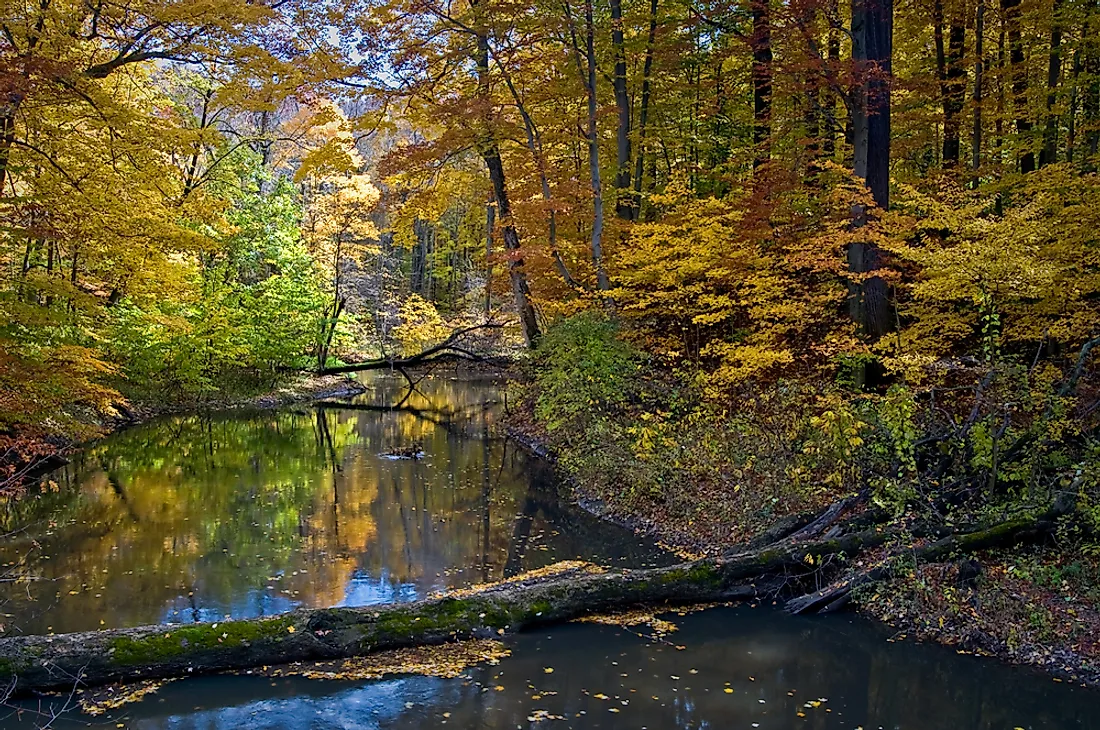The 12 National Natural Landmarks of Michigan

The United States National Natural Landmarks (NNL) is a program that identifies and encourages the management, conservation, and rehabilitation of natural history in the US. The program identifies the geological and biological features in private and public ownership. The main aim of the program is to encourage and support individual and organization efforts in preserving sites that illustrate the ecological and geological history of the country. The program also seeks to promote the public to appreciate natural heritage.
There are 599 national natural landmarks in the country spread across 48 states, and the territories of Virgin Islands, Puerto Rico, Guam, and American Samoa. Delaware and Louisiana are the only states without a national natural landmark. The federal, state, county, or municipal governments manage about one-half of the landmark sites. One-third is privately owned while the rest is owned and operated by public-private cooperation. A site qualifies as NNL because it contains the remnants of a specific geological, ecological, or biological features.
There are 12 NNLs in the state of Michigan; they include northern swamp forests, boreal bog, and marshland forest. The following are the National Natural Landmarks of Michigan.
National Natural Landmarks of Michigan
Warren Woods Natural Area
Warren Woods Natural Area was designated in 1967 as the first NNL in the state. The 328-acre park consists of the only remaining climax beech-maple forest in Michigan, maples, and several species of northern hardwoods. In the past, tourists scarred the beeches with hand-carved graffiti, but authorities barred the practice allowing the trees to regenerate. The Warren Woods Ecological Field Station used as a research station by the University of Chicago occupies Forty-two acres of the park.
Haven Hill State Natural Area
The Haven Hill State Natural Area is a 587-acre park within the Highland Recreation Area. Haven Hill is owned by the state and was designated in 1976. The park contains every type of forest in Michigan within 587 acres. The trees found within the park are; Tamarack, oak-hickory, beech-maple, mixed hardwood forest, and cider. The area has remained untouched for the past 75 years. The park provides a habitat for about 17 mammals and 100 species of birds.
Grand Mere Lakes
The Grand Mere Lakes is the only NNLs in Michigan that is not primarily forested lands. The lakes contain a series of four low-lying areas created by the postglacial ancestors of Lake Michigan. The lakes illustrate how aquatic environments evolve into terrestrial ecosystems. A buffer zone of dunes protect the lakes from draining Lake Michigan. The 1,281-acre NNL was designated in 1968 and is owned by a cooperation of the State and Private investors.
Ownership of the NNLs
The state of Michigan wholly owns eight landmarks. Strangmoor Bog is the only landmark owned by the federal government while the state and private individuals own Grand Mere Lakes. All 12 landmarks were designated between 1967 and 1984.
The 12 National Natural Landmarks of Michigan
| Rank | Name | Date | County | Ownership |
|---|---|---|---|---|
| 1 | Black Spruce Bog Natural Area | 1976 | Jackson | State |
| 2 | Dead Stream Swamp | 1976 | Missaukee, Roscommon | State |
| 3 | Dukes Research Natural Area | 1974 | Marquette | Federal |
| 4 | Grand Mere Lakes | 1968 | Berrien | State, private |
| 5 | Haven Hill State Natural Area | 1976 | Oakland | State |
| 6 | Newton Woods | 1976 | Cass | State |
| 7 | Porcupine Mountains | 1984 | Gogebic, Ontonagon | State |
| 8 | Roscommon Virgin Pine Stand | 1980 | Roscommon | State |
| 9 | Strangmoor Bog | 1973 | Schoolcraft | Federal |
| 10 | Tobico Marsh | 1976 | Bay | State |
| 11 | Toumey Woodlot | 1976 | Ingham | State |
| 12 | Warren Woods Natural Area | 1967 | Berrien | Private |











